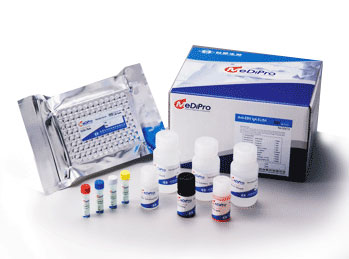|
 Epstein-Barr
virus (EBV), a human herpes virus, is the cause of a major etiological factor
in a number of human diseases, including infectious mononucleosis, Burkitt's lymphoma
and nasopharyngeal carcinoma. Epstein-Barr
virus (EBV), a human herpes virus, is the cause of a major etiological factor
in a number of human diseases, including infectious mononucleosis, Burkitt's lymphoma
and nasopharyngeal carcinoma.
Nasopharyngeal carcinoma (NPC) is a malignant
tumor which occurs at high frequency among Chinese living in Taiwan, Hong Kong,
Singapore, Malaysia and South China. It has poor prognosis due to that majority
of cases is at late stage of the disease and therefore diagnosis of NPC at early
stage would be important to reduce the mortality.
Seroepidemiological
data have shown that sera from NPC patients have high titers of EBV specific antibodies.
A rise in titer of serum IgA to EBV viral capsid antigen (VCA) and EBV induced
early antigen (EA) in patients with NPC was first reported by Henle and Henle
(1976). IgA and IgG to EBV membrane antigen (MA) have also been detected in sera
from NPC patients (Zhu et al., 1986). Although IgA responses to VCA measured in
immunofluorescent assays have generally been used to screen for NPC, the studies
indicate that the IgA against EA combined with EB Nuclear Antigen-1 (EBNA-1) as
measured by ELISA showed better specificity and sensitivity than the IgA responses
to VCA as measured by immunofluorescence (Fones-Tan et al., 1994). A soluble form
of the EBV EA+EBNA-1 is the basis of the serology assay being described in this
instruction manual.
The MeDiPro anti-EBV IgA ELISA kit, which is developed
in collaboration with Chang-Gung University, Taiwan, shows superior performance
for differentiating NPC patients from normal population.
|